People refer to many different species as “Angelfish.” Several species live in saltwater habitats, and a handful of unrelated species occupy freshwater habitats.
People commonly keep one freshwater species, Pterophyllum scalare, as pets in home aquariums. For this reason, we will focus primarily on this species. Read on to learn about the Angelfish.
Description of the Angelfish
This fish has a uniquely shaped body. It is laterally compressed, which means that its body appears tall and skinny rather than wide and flat. The fins on the top and bottom of its body point outward, which makes its overall body shape similar to that of a diamond.
It typically measures about six inches long and eight inches “tall” from the top fin to the tip of the bottom fin.
Interesting Facts About the Angelfish
This species (and group) is quite unique. Outside of their abnormal body shape, learn what makes these fish interesting, below.
- It’s a Cichlid! – When you picture a cichlid, this probably isn’t what you picture. However, researchers place this species in the Cichlidae family along with the humphead cichlid and Jack Dempsey.
- All in the Family – Researchers also recognize two other similar species in this genus. All three species in the group look quite similar, and live in similar regions. However, people generally keep Pterophyllum scalare as a pet.
- What’s in a Name? – The taxonomic genus of this species, Pterophyllum, roughly translates to the Greek words for sail – leaf. This is in reference to their unique fins.
Habitat of the Angelfish
In their natural range, this species lives only in freshwater habitats. It occupies floodplains, swamps, and similar slow-moving water bodies. Within these habitats, it prefers areas with dense vegetation for it to hunt for prey and hide from predators. Water quality ranges between clear and silty water.
Distribution of the Angelfish
This fish species, along with its close relatives, lives in South America. You can find it in the Amazon River Basin, primarily throughout Peru, Brazil, and Colombia. Outside of its wild range, you can find this population in home aquariums across the globe.
Diet of the Angelfish
Like other cichlids, this fish is omnivorous, which means that it eats both plants and animal matter. However, because of its small size, it feeds primarily on small invertebrates.
Some common food items include algae, underwater vegetations, worms, plankton, shrimp, insects, insect larvae, and other tiny creatures. People feed these fish commercially produced fish foods.
Angelfish and Human Interaction
Humans keep this fish in home aquariums, but most come from captive breeding and not from the wild. Though the IUCN has not assessed this species, human activity does impact them to some extent. Habitat destruction, pollution, climate change, and the introduction of invasive species all impact these fish adversely.
Domestication
Humans have not domesticated these fish.
Does the Angelfish Make a Good Pet
Yes, this species does make a good pet. However, it is important for you to remember to only purchase captive-bred animals. Wild-caught animals can spread disease to the rest of your fish and deplete the wild populations.
Angelfish Care
You should keep this species in a relatively large tank, at least 20 gallons or more. They thrive in taller tanks as well because they grow taller than they do long.
In the wild, they prefer warm tropical waters, so you should keep their tanks warmer as well. You should also provide plenty of real or artificial plants to replicate their wild habitats.
Behavior of the Angelfish
Like other members of the Cichlidae family, these fish have a somewhat aggressive nature. However, they are not quite as aggressive as some other cichlid species.
You can keep them with some other fish around their size, but they will eat fish small enough to fit in their mouths. Aggressive behavior decreases when you provide plenty of food for the fish.
Reproduction of the Angelfish
These fish form monogamous pairs and do not usually breed with any other partners. The pair searches for a nesting site together, and cleans any algae or debris from the surface.
Females lay over a thousand eggs in total, and sticks them to the surface of a leaf or rock. The male fertilizes the eggs once the female lays them. Both parents guard the eggs.


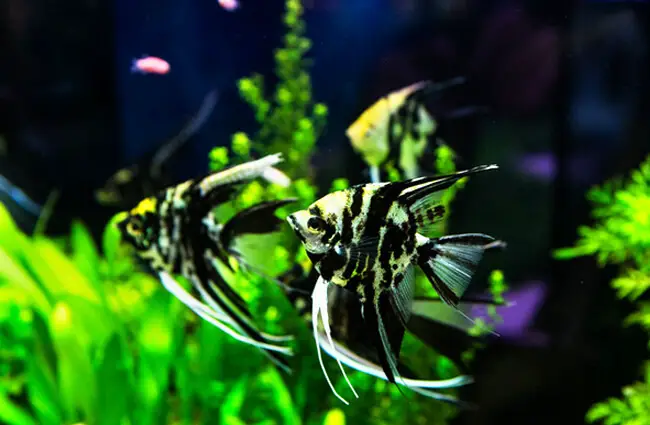
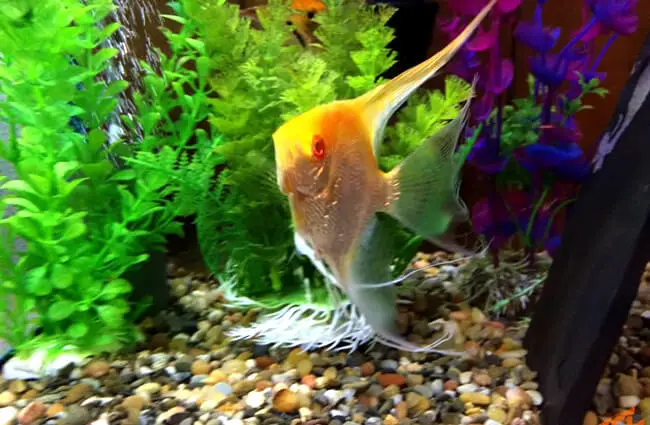
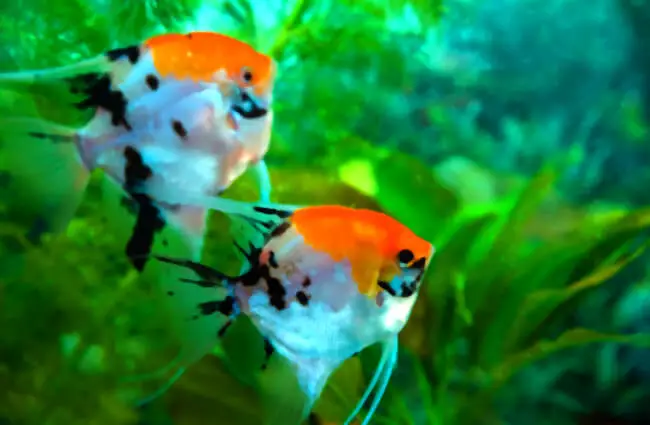
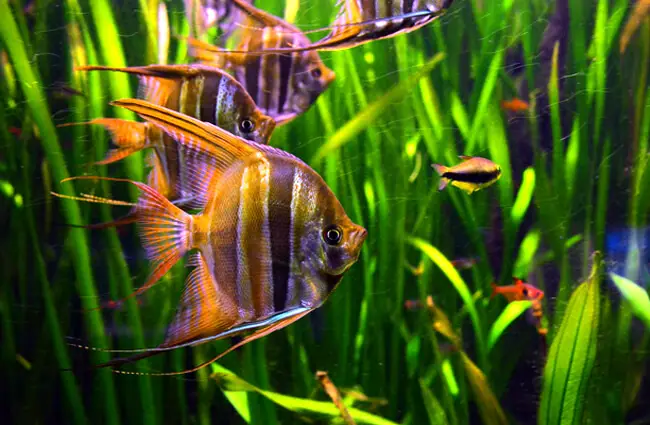
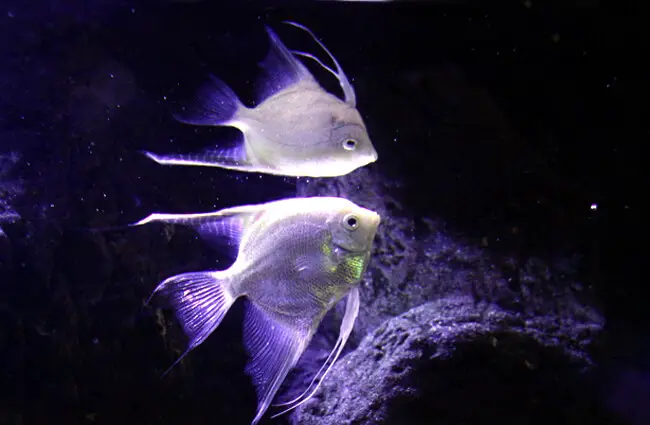
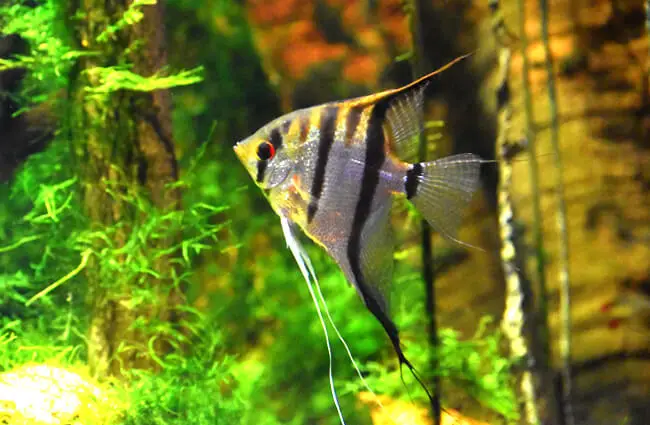
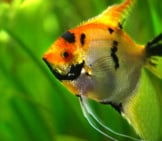
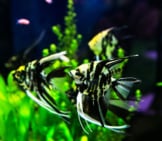
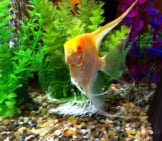
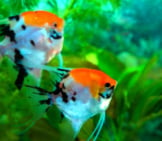
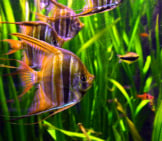
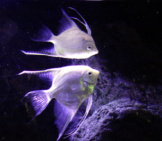
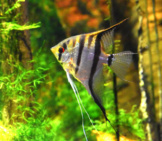
![Red Angus Closeup of a beautiful Red Angus cowPhoto by: U.S. Department of Agriculture [pubic domain]https://creativecommons.org/licenses/by/2.0/](https://animals.net/wp-content/uploads/2020/03/Red-Angus-4-238x178.jpg)












![Red Angus Closeup of a beautiful Red Angus cowPhoto by: U.S. Department of Agriculture [pubic domain]https://creativecommons.org/licenses/by/2.0/](https://animals.net/wp-content/uploads/2020/03/Red-Angus-4-100x75.jpg)

